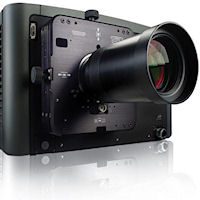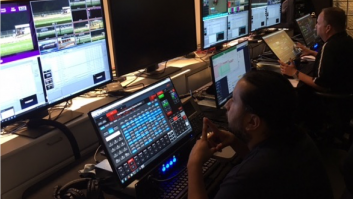
A move to higher frame rate capture and exhibition was given a leg up by Director James Cameron and projection system manufacturer Christie at IBC but economics are still an impediment to its widespread introduction.
The display of higher frame rates (HFR) of 48 or 60fps are said to deliver a far more realistic experience especially to screening 3D features, and especially those which use fast movement and rapid pans.
James Cameron is a strong advocate of its introduction and favours 60fps for Avatar 2 but he is aware that there are technical hurdles and an economic model that need to be developed for the process to go mainstream.
He demonstrated a proof of concept for HFR at US show Cinemacon earlier this year and at IBC continued the argument: “The cost (to go to higher frame rates) is not at the camera, which is very straightforward; the cost is not at the projectors, because it is a software upgrade,” he said. “I could go out right now, shoot a movie at 60 fps if it was all live action and project it, and have a stunning effect. It has value immediately. What we have to work on is the FX workflow—primarily the render pipeline.” “The trick in the near term is going to be to not have a big upward inflection in the cost of visual effects,” he explained. “I believe there are ways to do it, but there is some code that needs to be written to do it, and I’m working with some of the big FX providers on that now. You can’t expect people to run off adopting a higher frame rate if it is going to cost an addition 10 percent of their FX costs, which are already pretty high. We have to get it down to 1 percent or so, which I think is achievable.” Cameron’s production company Lightstorm Entertainment has partnered with Christie in a five-year agreement to further 3D digital cinema and the use of higher frame rates. Additionally, Christie has started to demonstrate the first 3D High Frame Rate (HFR) D-Cinema system using a single projector. “The RealD XL Cinema System and International Datacasting’s SuperFlex Pro Cinema Event Player (PCEP) are available today, along with Christie’s DLP projectors, providing cinema owners and content owners with the foundation they need to realise new revenue streams from the projection of ‘alternative content’ sporting and theatrical events in 3D HFR,” said Don Shaw, Director, Product Management for Christie’s Entertainment Solutions division. “The delivery setup used at CinemaCon was a customised solution that used two Christie projectors, broadcast (rather than cinema) servers and unencrypted, chroma sub-sampled colour data, and as such was not intended to be duplicated in cinemas globally when the latest digital 3D content in such widely-anticipated movies as Avatar 2 and 3, and The Hobbit, are released beginning at the end of 2012.” “Exhibitors are looking for complete systems that can be readily installed in cinema projection rooms to facilitate the rollout of these and other 3D HFR cinema productions, but to do so, technology manufacturers need to step up with cost-effective solutions that seamlessly integrate projectors, servers and 3D cinema equipment,” added Shaw. “The next step in the 3D HFR solution is for vendors to develop and market new, more powerful and more versatile Integrated Media Block (IMB) server technology to provide the performance and security that exhibitors demand.”
www.christiedigital.com






